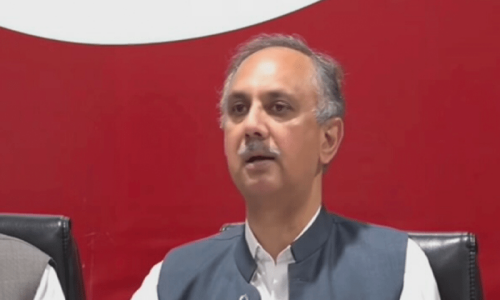50pc of female doctors never work after graduation

ISLAMABAD: It is a general perception in Pakistan that uneducated people do not allow women to work and girls should be provided education to make them an effective part of society.
But on Tuesday, the participants of a news conference were informed that about 50 per cent of women, who graduated from medical colleges, never worked.
Pakistan Medical and Dental Council (PMDC) president Prof Dr Masood Hameed told the news conference that female medical students occupied the general merit seats in public sector medical colleges and got subsidy but after completing their education they never started their professional career.
Govt spends Rs2.4m on each medical student who takes admission to a medical college on general merit seat
Dr Hameed said at the moment there were 78037 male and 65324 female doctors, 5420 male dental practitioners and 8300 female dental practitioners in Pakistan. Out of the total medical and dental practitioners, almost 50 per cent are women, he added.
“Only 50 per cent of the female doctors are working. On the other hand, a number of doctors (mostly males) have gone out of the country. There are around 50,000 to 60,000 medical practitioners against the demand of 600,000 in the country,” he said.
“We need more medical and dental colleges. Pakistan is producing around 14,000 doctors per year out of whom 70 per cent are women. It is feared that almost 50 per cent of the medical students would never work,” he said.
Dr Hameed said in Pakistan only $9.3 were spent on the healthcare of each citizen per year against the international standard of $60.
“With such scant resources and number of medical practitioners, Pakistan cannot meet its needs for healthcare.
Moreover, migration of doctors and the rapidly increasing population is adding to the problem.”
He said so far the College of Physicians and Surgeons Pakistan (CPSP) produced only 32879 specialists out of whom 40 per cent left the country. So there are only 20000 specialists against the requirement of 100,000.
In reply to a question, Dr Hameed said the gap of specialists in the country could not be fulfilled.
“The PMDC is being restricted in its functioning by certain elements. They have refused to accept the PMDC as a regulator.”
He added that teachers currently being produced were not up to the standard that was why the quality of medical education was deteriorating.
Dr Hameed, while talking to Dawn, added that students who got admission to medical colleges on general merit seats paid around Rs15,000 to Rs20,000 fee a year, so they completed their MBBS by spending around Rs100,000.
“On the other hand, the government spends almost Rs2.5 million on each MBBS student. Unfortunately, after completion of the course, most of the female medical graduates never worked. Those who want to work try to leave the country and settle abroad, especially in the US, Saudi Arabia,” he said.
“The US prefers to get doctors from other countries because on the production of each doctor it has to spend $250,000. So the US hires the services of doctors from other countries and spends that amount in the health sector.”
The PMDC chief said he was formulating a proposal under which every student who got admission to a medical college on general seat would be bound to work in the government or private sector in the country for at least three years after graduation. Those who want to go abroad would have to pay the amount of subsidy - Rs 2.4 million - paid by the government for their medical education.
“Moreover, there is a suggestion that doctors who have studied on general merit seats and were earning well should pay back the amount of subsidy to the government. A pool should be made and doctors should be asked to deposit the amount of subsidy in it. That amount can be spent in the health sector,” he said.
Published in Dawn, October 22nd, 2014












































